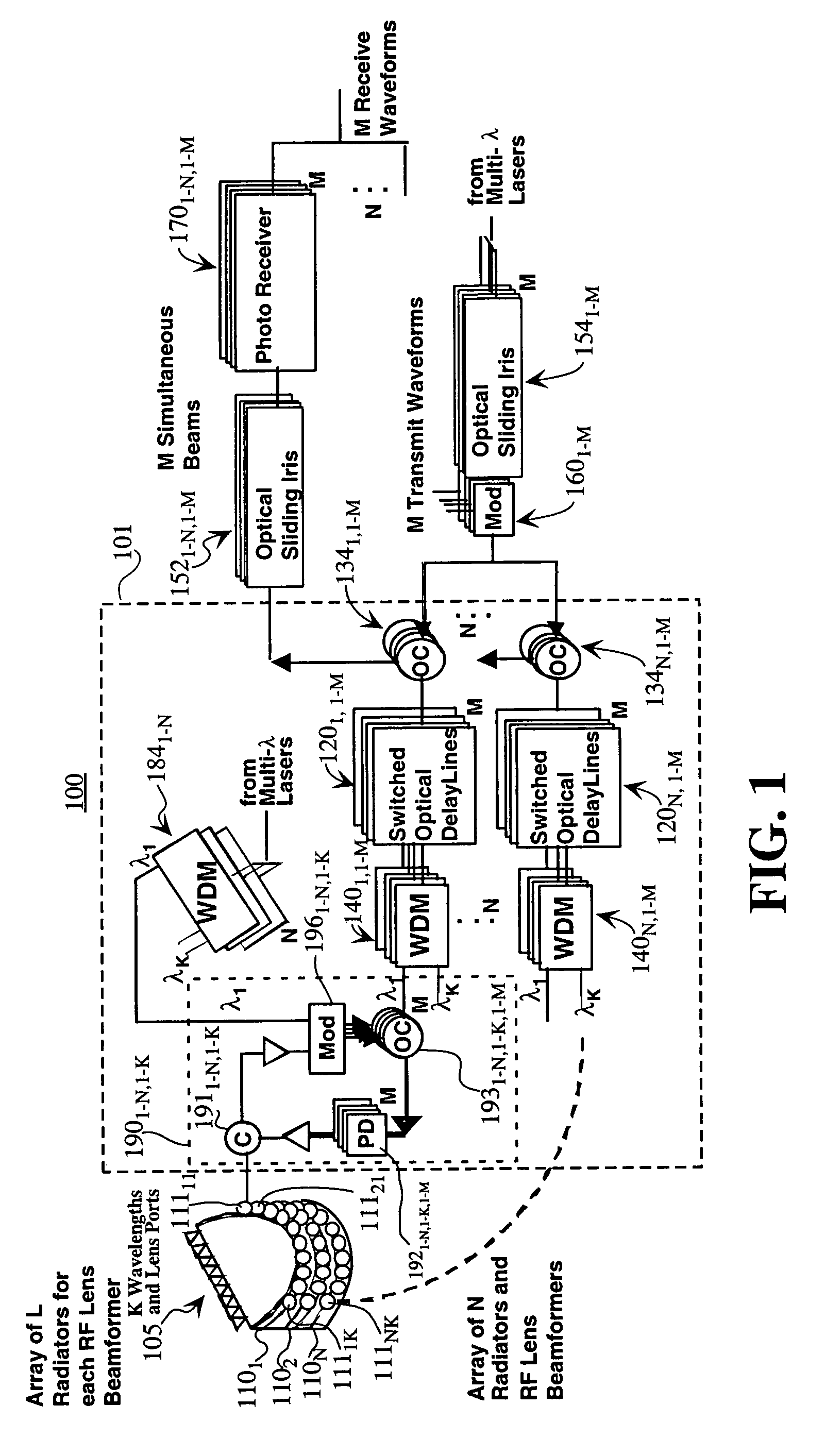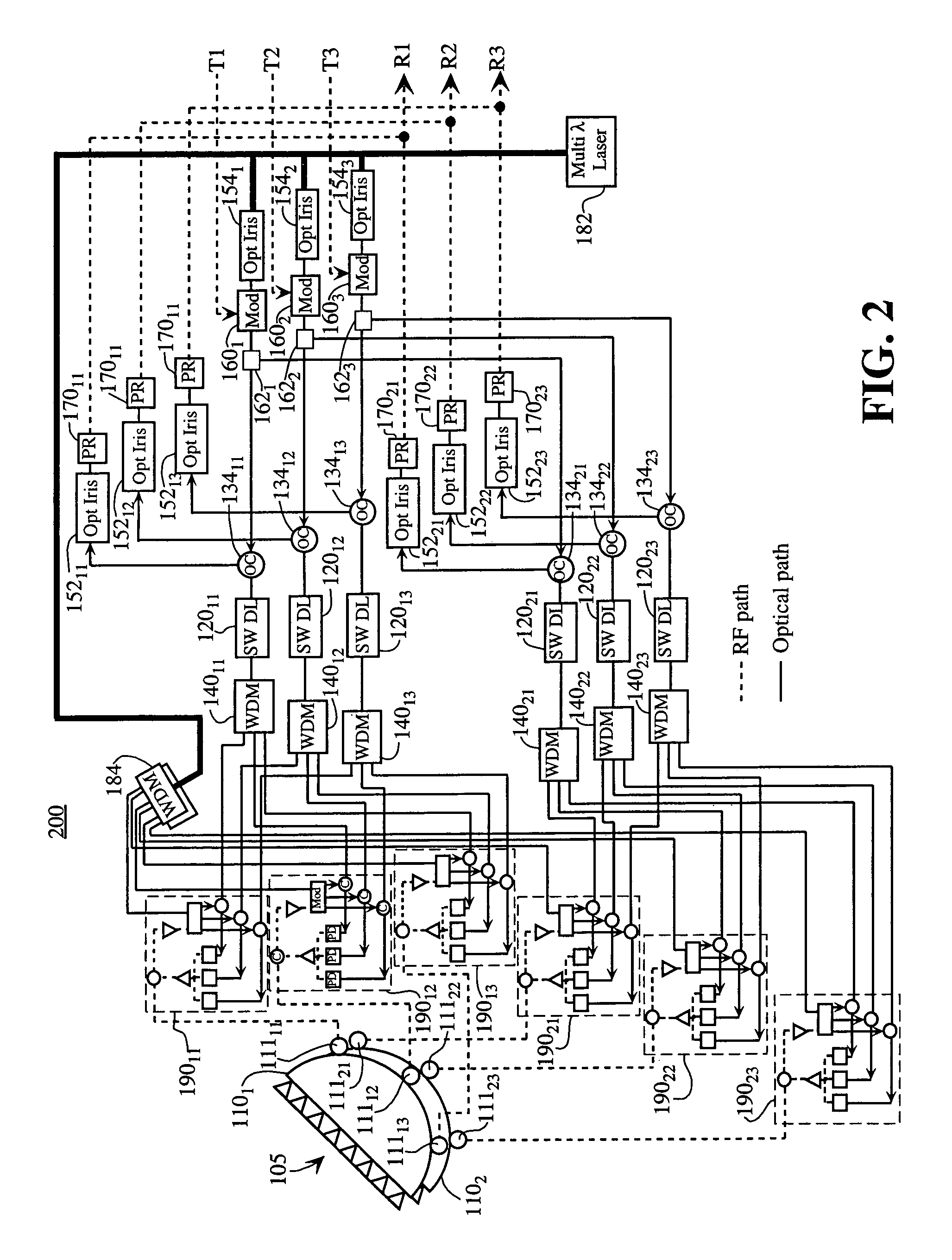Agile optical wavelength selection for antenna beamforming
a technology of optical wavelength selection and antenna beamforming, which is applied in the direction of antennas, electrical equipment, etc., can solve the problems of generality of antenna beams and complicating the architecture of such a system
- Summary
- Abstract
- Description
- Claims
- Application Information
AI Technical Summary
Benefits of technology
Problems solved by technology
Method used
Image
Examples
Embodiment Construction
[0024]Embodiments of the present invention provide beamforming systems and methods for forming beams with an array antenna that makes use of RF lens beamformers (such as Rotman lenses, R / 2R lenses or Luneberg lenses) and a multi-wavelength photonic network with optical irises. The beamforming systems and methods also may include switched optical delay lines that are cascaded with the RF lenses. The RF lens beamformers may be implemented as well-known RF structures (such as those described in pages 595–626 of the Handbook of Microwave and Optical Components, Volume 1, edited by K. Chang, J. Wiley & Sons, 1989). The RF beamformers may also be provided by an optical implementation as described in U.S. Pat. No. 6,452,546, issued Sep. 17, 2002 to Stephens, incorporated herein by reference in its entirety.
[0025]Generally, a RF lens beamformer has a set of ports on one side, with those ports connected to the array of antenna elements. The RF lens has a second set of ports located on the ot...
PUM
 Login to View More
Login to View More Abstract
Description
Claims
Application Information
 Login to View More
Login to View More - R&D
- Intellectual Property
- Life Sciences
- Materials
- Tech Scout
- Unparalleled Data Quality
- Higher Quality Content
- 60% Fewer Hallucinations
Browse by: Latest US Patents, China's latest patents, Technical Efficacy Thesaurus, Application Domain, Technology Topic, Popular Technical Reports.
© 2025 PatSnap. All rights reserved.Legal|Privacy policy|Modern Slavery Act Transparency Statement|Sitemap|About US| Contact US: help@patsnap.com



